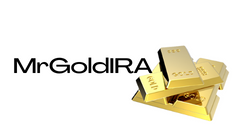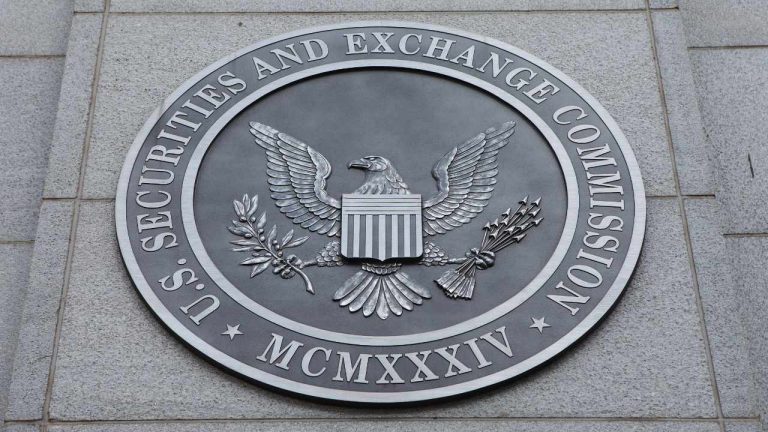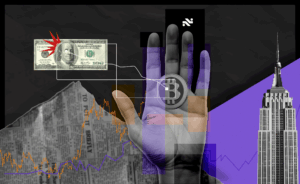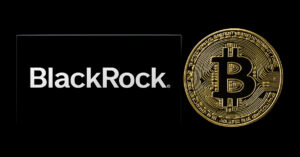
Introduction
The U.S. Securities and Exchange Commission (SEC) recently faced a major embarrassment when its official social media account, known as the X account, announced the approval of spot bitcoin exchange-traded funds (ETFs). However, within minutes, SEC Chairman Gary Gensler clarified that the account had been compromised, and the post was unauthorized. This incident has sparked speculation about whether it was a result of an internal error or an intentional act. In this article, we delve into the details of this social media blunder and the subsequent reactions from the crypto community.
The Unauthorized Announcement
On Tuesday, the SEC's X account made a surprising announcement that the regulator had approved spot bitcoin ETFs for trading on all registered national securities exchanges. This news instantly created a buzz within the crypto industry and triggered a frenzy on social media platforms. However, the excitement was short-lived, as Chairman Gary Gensler promptly responded on the X platform, clarifying that the SEC account had been compromised, and the post about spot bitcoin ETF approval was unauthorized. Gensler emphasized that the SEC had not approved any listing or trading of spot exchange-traded products.
Reactions and Suspicions
The unauthorized announcement about spot bitcoin ETF approval triggered a wave of reactions on social media, with many questioning the SEC's ability to protect investors and accusing the regulator of market manipulation. Bitcoin proponent Jameson Lopp expressed his disappointment, highlighting the irony of the SEC's failure to secure its own social media account while claiming to safeguard market integrity. This incident has raised concerns about the SEC's credibility and its ability to regulate the crypto industry effectively.
Some individuals on social media suspect that the premature announcement was a result of an internal mistake. They believe that the news was intended to be released on Wednesday, but someone at the SEC made an error and posted it ahead of schedule. Skybridge Capital founder Anthony Scaramucci voiced his skepticism, suggesting that Chairman Gensler was being dishonest and shifting the blame to the compromised social media account. Gabor Gurbacs, head of digital assets strategy at Vaneck, questioned the plausibility of the SEC's explanation, pointing out the complexity of recovering a hacked account and responding to the incident within a few minutes.
Another theory that emerged on social media is the possibility of an inside job. Some speculate that the unauthorized announcement was an intentional act aimed at creating an event to delay or prevent the approval of a bitcoin ETF. While these theories remain speculative, they highlight the skepticism surrounding the incident and the underlying tensions between the crypto community and regulatory authorities.
Expected Approvals and Future Implications
Despite the social media blunder, the SEC is expected to proceed with the approval of multiple spot bitcoin ETFs on Wednesday. Proposals from Cathie Wood's Ark Invest and 21shares are among those being considered. Ten applicants for spot bitcoin ETFs have submitted their amended registration statements to the SEC, and several asset managers anticipate commencing trading of their ETFs on Thursday.
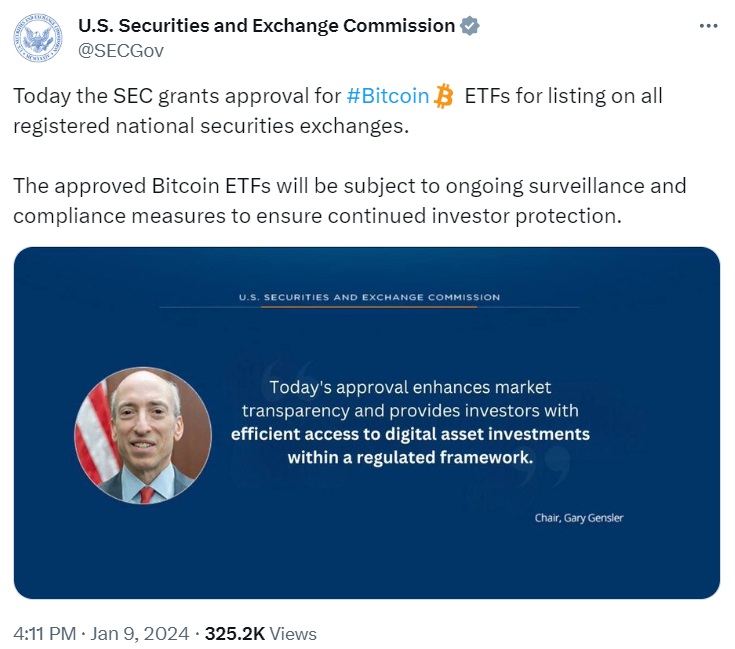
Conclusion
The SEC's unauthorized spot bitcoin ETF announcement on its social media account has brought embarrassment to the regulatory authority. The incident raises questions about the SEC's internal processes and its ability to safeguard sensitive information. It also highlights the growing tension between regulators and the crypto community. As the SEC proceeds with the approval of spot bitcoin ETFs, the industry will closely monitor the regulator's actions and decisions. The incident serves as a reminder of the importance of maintaining strong cybersecurity measures and ensuring the integrity of regulatory communications.
What are your thoughts on the SEC's social media blunder? Do you believe the account was compromised, or was it an accidental release of information by someone at the SEC? Share your opinions in the comments section below.
Frequently Asked Questions
Are gold investments a good idea for an IRA?
If you are looking for a way to save money, gold is a great investment. It can be used to diversify your portfolio. But there is more to gold than meets the eye.
It has been used as a currency throughout history and is still a popular method of payment. It is often called “the most ancient currency in the universe.”
But gold is mined from the earth, unlike paper currencies that governments create. That makes it very valuable because it's rare and hard to create.
The price of gold fluctuates based on supply and demand. The strength of the economy means people spend more, and so, there is less demand for gold. As a result, the value of gold goes up.
The flip side is that people tend to save money when the economy slows. This leads to more gold being produced which decreases its value.
This is why gold investment makes sense for both individuals and businesses. You'll reap the benefits of investing in gold when the economy grows.
You'll also earn interest on your investments, which helps you grow your wealth. In addition, you won’t lose any money if gold falls in value.
How to Open a Precious Metal IRA
The first step in opening an Individual Retirement Account, (IRA), is to decide if it's something you want. If you do, you must open the account by completing Form 8606. To determine which type of IRA you qualify for, you will need to fill out Form 5204. You must complete this form within 60 days of opening your account. Once you have completed this form, it is possible to begin investing. You could also opt to make a contribution directly from your paycheck by using payroll deduction.
To get a Roth IRA, complete Form 8903. Otherwise, the process is identical to an ordinary IRA.
To qualify for a precious Metals IRA, there are specific requirements. The IRS stipulates that you must have earned income and be at least 18-years old. Your earnings cannot exceed $110,000 per year ($220,000 if married and filing jointly) for any single tax year. Additionally, you must make regular contributions. These rules will apply regardless of whether your contributions are made through an employer or directly out of your paychecks.
You can use a precious-metals IRA to purchase gold, silver and palladium. However, physical bullion will not be available for purchase. You won't have the ability to trade stocks or bonds.
Your precious metals IRA can be used to directly invest in precious metals-related companies. This option may be offered by some IRA providers.
There are two main drawbacks to investing through an IRA in precious metallics. First, they are not as liquid or as easy to sell as stocks and bonds. It's also more difficult to sell them when they are needed. Second, they are not able to generate dividends as stocks and bonds. Also, they don't generate dividends like stocks and bonds. You will eventually lose money rather than make it.
How can I withdraw from a Precious metal IRA?
First, determine if you would like to withdraw money directly from an IRA. After that, you need to decide if you want to withdraw funds from an IRA account. Next, make sure you have enough money in order for you pay any fees or penalties.
Consider opening a taxable brokerage instead of an IRA if it is possible to pay a penalty if your withdrawal is made before the deadline. You will also have to account for taxes due on any amount you withdraw if you choose this option.
Next, you'll need to figure out how much money you will take out of your IRA. This calculation depends on several factors, including the age when you withdraw the money, how long you've owned the account, and whether you intend to continue contributing to your retirement plan.
Once you know how much of your total savings to convert to cash, it's time to choose the type of IRA that you want. While traditional IRAs are tax-free, Roth IRAs can be withdrawn at any time after you reach 59 1/2. However, Roth IRAs will charge income taxes upfront and allow you to access your earnings later without additional taxes.
Once the calculations have been completed, it's time to open a brokerage accounts. Most brokers offer free signup bonuses and other promotions to entice people to open accounts. To avoid unnecessary fees, however, try opening an account using a debit card rather than a credit card.
You will need a safe place to store your coins when you are ready to withdraw from your precious metal IRA. Some storage facilities will accept bullion bars, others require you to buy individual coins. You will need to weigh each one before making a decision.
Bullion bars require less space, as they don't contain individual coins. But, each coin must be counted separately. However, you can easily track the value of individual coins by storing them in separate containers.
Some people like to keep their coins in vaults. Others prefer to place them in safe deposit boxes. No matter what method you use, it is important to keep your bullion safe so that you can reap its benefits for many more years.
Who holds the gold in a gold IRA?
An individual who has gold is considered to be a “form of money” by the IRS and subject to taxation.
You must have gold at least $10,000 and it must be stored for at the least five years in order to take advantage of this tax-free status.
While gold may be a great investment to help prevent inflation and volatility in the market, it's not wise to keep it if you won't use it.
If you plan to eventually sell the gold, you'll need a report on its value. This could impact the amount of capital gains taxes your owe if you cash in your investments.
Consult a financial advisor or accountant to determine your options.
Can I hold physical gold in my IRA?
Gold is money. Not just paper currency. People have been using gold for thousands of years to store their wealth and protect it from economic instability and inflation. Today, investors invest in gold as part a diversified portfolio. This is because gold tends do better in financial turmoil.
Today, many Americans invest in precious metals such as gold and silver rather than stocks and bonds. Although owning gold does not guarantee that you will make money investing in it, there are many reasons to consider adding gold into your retirement portfolio.
Another reason is the fact that gold historically has performed better than other assets in times of financial panic. The S&P 500 declined 21 percent during the same period. Gold prices increased nearly 100 per cent between August 2011 – early 2013. During turbulent market conditions gold was one of few assets that outperformed stock prices.
Gold is one of the few assets that has virtually no counterparty risks. Even if your stock portfolio is down, your shares are still yours. However, if you have gold, your value will rise even if the company that you invested in defaults on its loans.
Finally, gold offers liquidity. This means that you can sell gold anytime, regardless of whether or not another buyer is available. Because gold is so liquid compared to other investments, buying it in small amounts makes sense. This allows one to take advantage short-term fluctuations within the gold price.
Statistics
- The price of gold jumped 131 percent from late 2007 to September 2011, when it hit a high of $1,921 an ounce, according to the World Gold Council. (aarp.org)
- This is a 15% margin that has shown no stable direction of growth but fluctuates seemingly at random. (smartasset.com)
- Gold is considered a collectible, and profits from a sale are taxed at a maximum rate of 28 percent. (aarp.org)
- Contribution limits$6,000 (49 and under) $7,000 (50 and up)$6,000 (49 and under) $7,000 (50 and up)$58,000 or 25% of your annual compensation (whichever is smaller) (lendedu.com)
- Indeed, several financial advisers interviewed for this article suggest you invest 5 to 15 percent of your portfolio in gold, just in case. (aarp.org)
External Links
forbes.com
- Gold IRA, Add Sparkle to Your Retirement Nest egg
- Understanding China's Evergrande Crisis – Forbes Advisor
wsj.com
- Saddam Hussein's InvasionHelped Uncage a Bear In 1991 – WSJ
- Do you want to keep your IRA gold at home? It's Not Exactly Legal – WSJ
cftc.gov
law.cornell.edu
- 7 U.S. Code SS7 – Designation boards of trade as contract market authorities
- 26 U.S. Code SS 408 – Individual retirement accounts
How To
The History of Gold as an Asset
From the beginning of history, gold was a popular currency. It was widely accepted around the world and enjoyed its purity, divisibility and uniformity. Aside from its inherent value, it could be traded internationally. Different weights and measurements existed around the world, however, because there were not international standards to measure gold. For example, in England, one pound sterling was equal to 24 carats of silver; in France, one livre tournois was equal to 25 carats of gold; in Germany, one mark was equal to 28 carats of gold; etc.
In the 1860s, the United States began to issue American coins made from 90% copper, 10% Zinc, and 0.942 Fine Gold. This resulted in a decline of foreign currency demand and an increase in the price. At this point, the United States minted large amounts of gold coins, causing the price of gold to drop. Due to the excessive amount of money flowing into the United States, they had to find a way for them to repay some of their debt. They sold some of their excess gold to Europe to pay off the debt.
Many European countries began accepting gold in exchange for the dollar because they did not trust it. However, after World War I, many European countries stopped taking gold and began using paper money instead. The price of gold rose significantly over the years. Even though the price fluctuates, gold is still one of best investments.
—————————————————————————————————————————————————————————————-
By: Kevin Helms
Title: SEC's Unauthorized Spot Bitcoin ETF Announcement: A Social Media Blunder
Sourced From: news.bitcoin.com/secs-spot-bitcoin-etf-approval-post-unauthorized-chair-gary-gensler-says-secs-x-account-was-compromised/
Published Date: Tue, 09 Jan 2024 23:00:11 +0000
Related posts:
 7 Best Gold IRA Companies 2023 (ranked by customer reviews).
7 Best Gold IRA Companies 2023 (ranked by customer reviews).
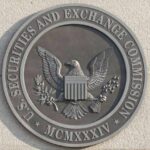 SEC Admits SIM Swap Attack Compromised Account, Fake Bitcoin ETF Announcement Posted
SEC Admits SIM Swap Attack Compromised Account, Fake Bitcoin ETF Announcement Posted
 The Growing Probability of Institutional Involvement in Spot Bitcoin ETFs
The Growing Probability of Institutional Involvement in Spot Bitcoin ETFs
 Concerns Mount Over Potential SEC Rejection of Spot Bitcoin ETFs, Analyst Weighs In
Concerns Mount Over Potential SEC Rejection of Spot Bitcoin ETFs, Analyst Weighs In
